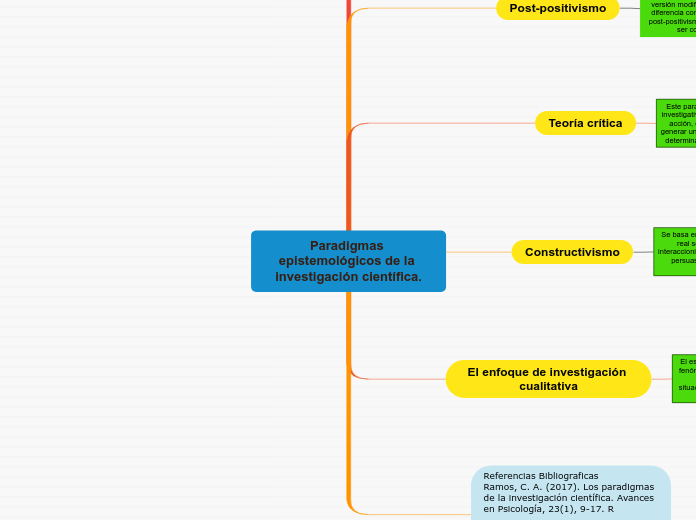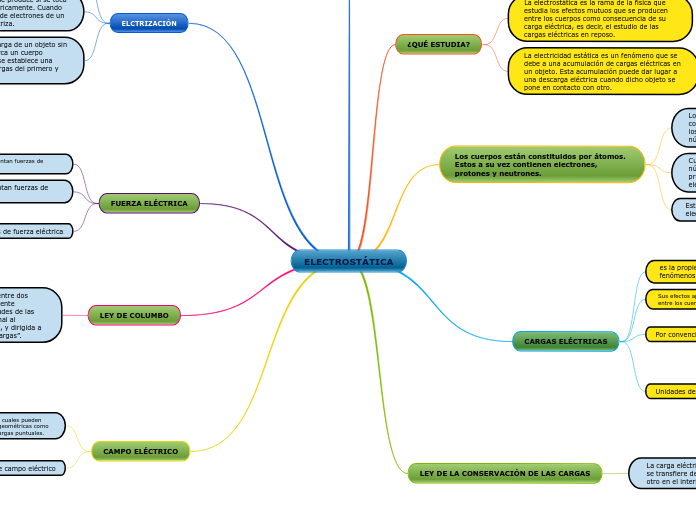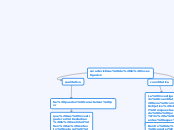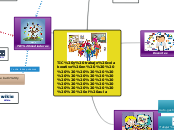Paradigmas epistemológicos de la investigación científica.
Referencias Bibliograficas Ramos, C. A. (2017). Los paradigmas de la investigación científica. Avances en Psicología, 23(1), 9-17. R
http://www.unife.edu.pe/publicaciones/revistas/psicologia/2015_1/Carlos_Ramos.pdf
El enfoque de investigación cualitativa
The ending of a story is essential. We all know that if the ending is weak, what happened before loses its importance. So make it unpredictable, but fair. A resolved ending answers all the questions and ties up any loose threads from the plot.
El estudio cualitativo busca la comprensión de los fenómenos en su ambiente usual, desarrollando la información basada en la descripción de situaciones, lugares, periódicos, textos, individuos, etc (Ramos, C.A.,2017).
This is the closure section of the story.
See examples of possible outcomes below:
- all problems have been solved
- it's clear how each one of your characters ends up
- your main character is transformed by the challenge
Se incluyen estudios
centrados en el lenguaje
Try answering these questions to come up with a closure:
- Have all the problems been solved?
- Is there a clear picture of what happens with each character in the story?
- Has the challenge transformed your main character?
- How do the characters feel in the end?
Acciones basados en la fenomenología y la hermenéutica
Los trabajos focalizados en los significados de textos
Estudios centrados en patrones
Principales conceptos
Uso de software de análisis cualitativo como el Atlas.ti
Decision Explorer
Triangulación
Idealismo
Realismo
Diseños narrativos
Teoría fundamentada
Investigación participativa
Interaccionismo simbólico
Investigación acción
Investigaciones etnográficas
La etnometodología
El interaccionismo simbólico
Constructivismo
Se basa en el principio de que el saber del mundo real se construye en base a procesos de interaccionismo social y de movilización de recursos persuasivos y representacionales (Ramos, C.A.,2017).
Desde el paradigma constructivista
La principal herramienta que
permite al investigador poder construir una teoría
sustantiva que permita interpretar
Discursos
Constructos
Percepción
Ideología
La subjetividad
Teoría crítica
The middle of the story is where you add layers of complications that will lead to the end. Reveal more about the character's journey. Did their personality go through changes? How did they overcome the challenges? And as you build up the story’s central conflict, make it more personal to that character. Also, from the middle act, you have to lead into the final act.
Este paradigma se contextualiza en una práctica investigativa caracterizada por una acción-reflexión-acción, que implica que el investigador busque generar un cambio y liberación de opresiones en un determinado contexto social (Ramos, C. A.,2017).
Aspectos que caracterizan mayoritariamente al paradigma crítico
Búsqueda de una transformación de las estructuras sociales
El proceso investigativo se genera en la acción, es decir, en la práctica
Intereses
Problemas
Comprensión social de las necesidades
Posee tres fases esenciales
Actuar
Pensar
Observar
Relación entre el investigador y el fenómeno de estudio
Poseer una visión holística y dialéctica de lo que se concibe como real
Post-positivismo
Según Flores (2004) Citado por Ramos, C. A. (2017) “Afirma que el post-positivismo es una versión modificada del paradigma positivista. La diferencia con el positivismo radica en que en el post-positivismo la realidad existe, pero no puede ser completamente aprehendida”
La pregunta epistemológica es respondida
mediante
Objetivismo
Dualismo modificado
Positivismo
In the beginning of the story (or the exposition), you will need to introduce the setting and characters. You might also want to introduce the main conflict. This part of the story is important because it gives the reader necessary background information and maybe even a first insight into a character’s personality.
El paradigma positivista sustentará a la investigación que tenga como objetivo comprobar una hipótesis por medios estadísticos o determinar los parámetros de una determinada variable mediante la expresión numérica (Ramos, C. A. 2017)
The setting (time & place) of a story can change throughout the plot.
Se clasifican en
Científico tecnológico
Sistemático gerencial
Sensory details include sight, sound, touch, smell, and taste. These details are important because they create depth in your setting.
See a few examples below:
- the smell of fresh bread
- the scent of freshly cut grass
- rain falling onto the windshield etc.
Racionalista
The weather is an important element in your story because it can highly influence the ambiance and the mood of the characters.
Empírico-analítico
The time of the story can also change. It can describe the event of a single day or can include an entire year's plot. Anyway, don't forget to mention it.
Cuantitativo
Your story can take place wherever your imagination will take you to.
For example: in an elevator, in an enchanted forest, etc. Don't forget to give details of the environment each time the setting changes, otherwise, the story can be confusing. Also, mention the seasons as each of them has unique weather and events.









